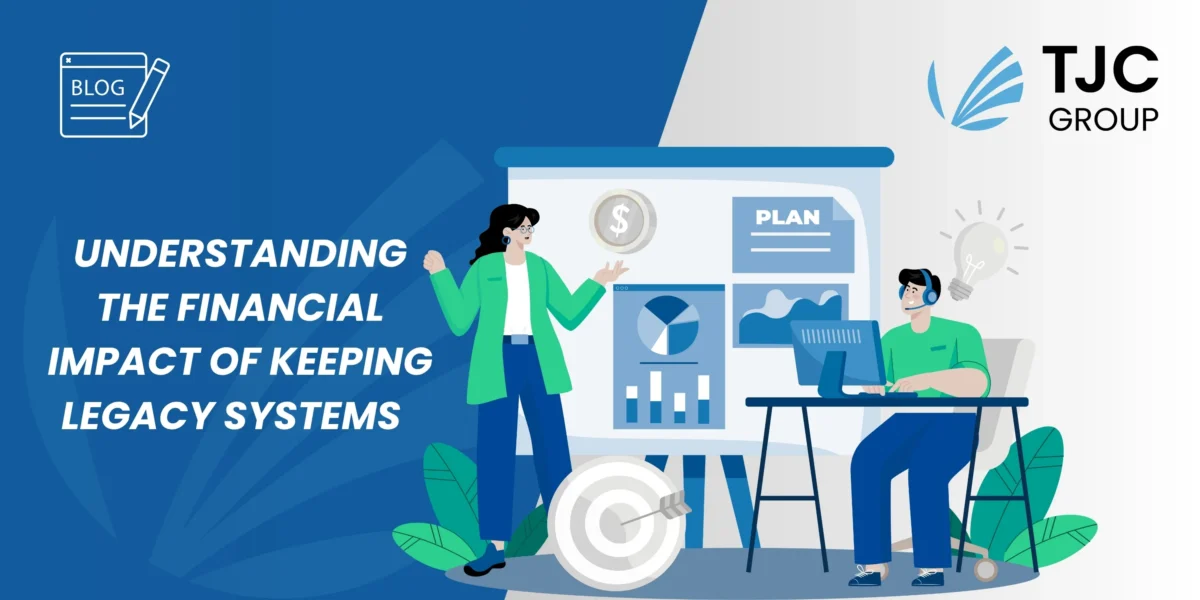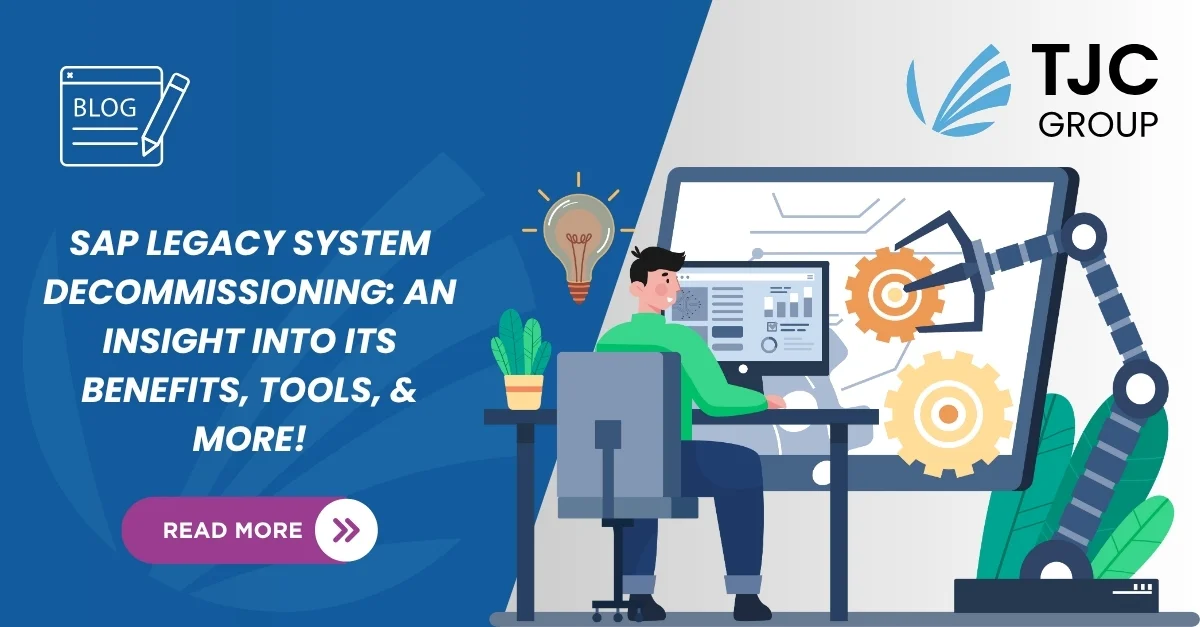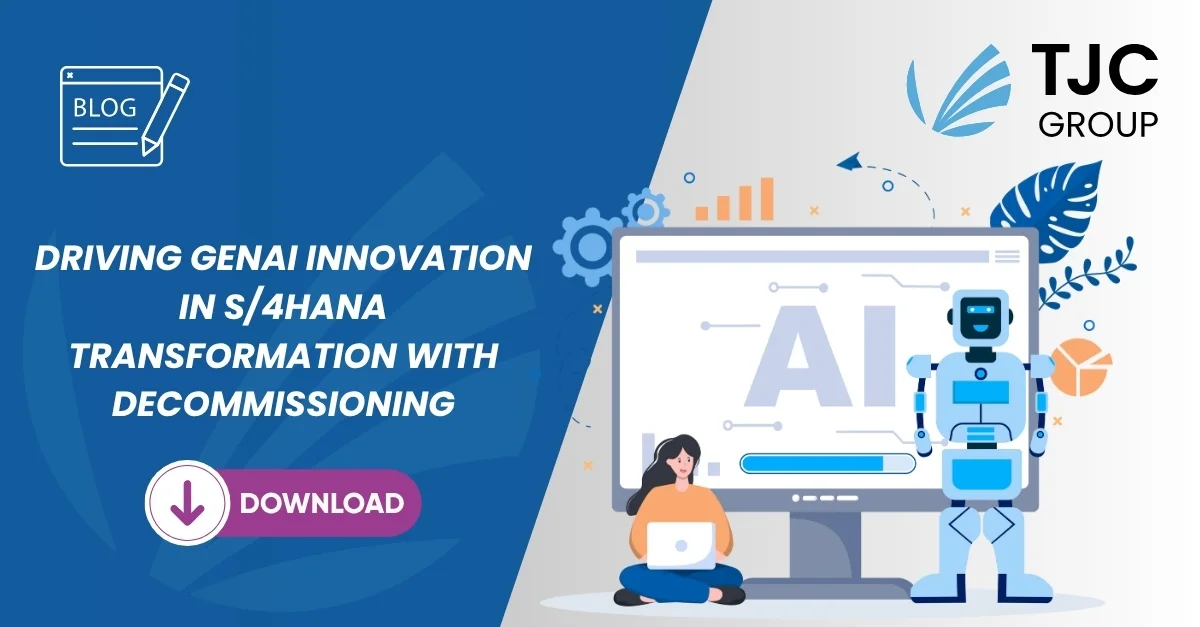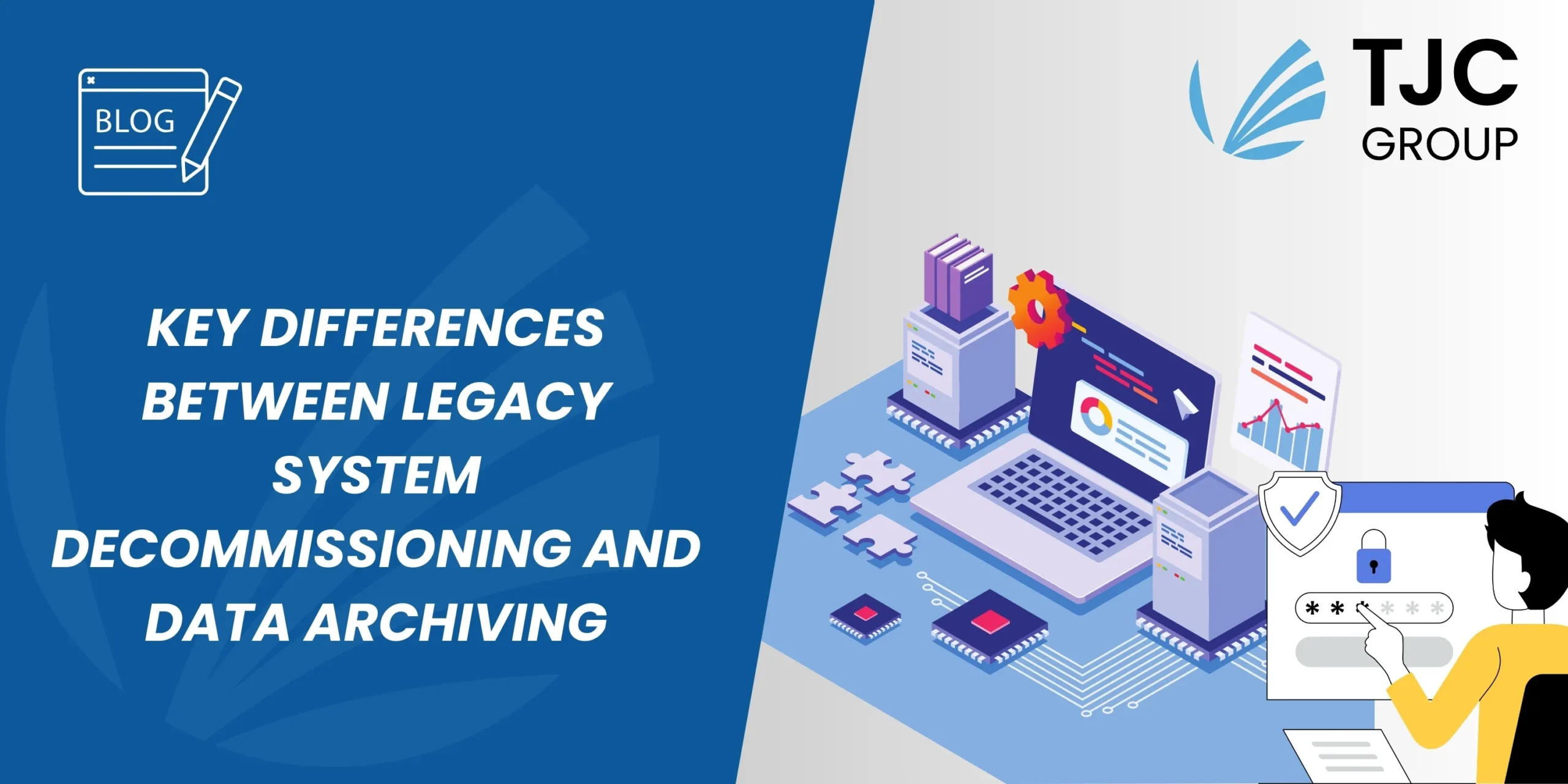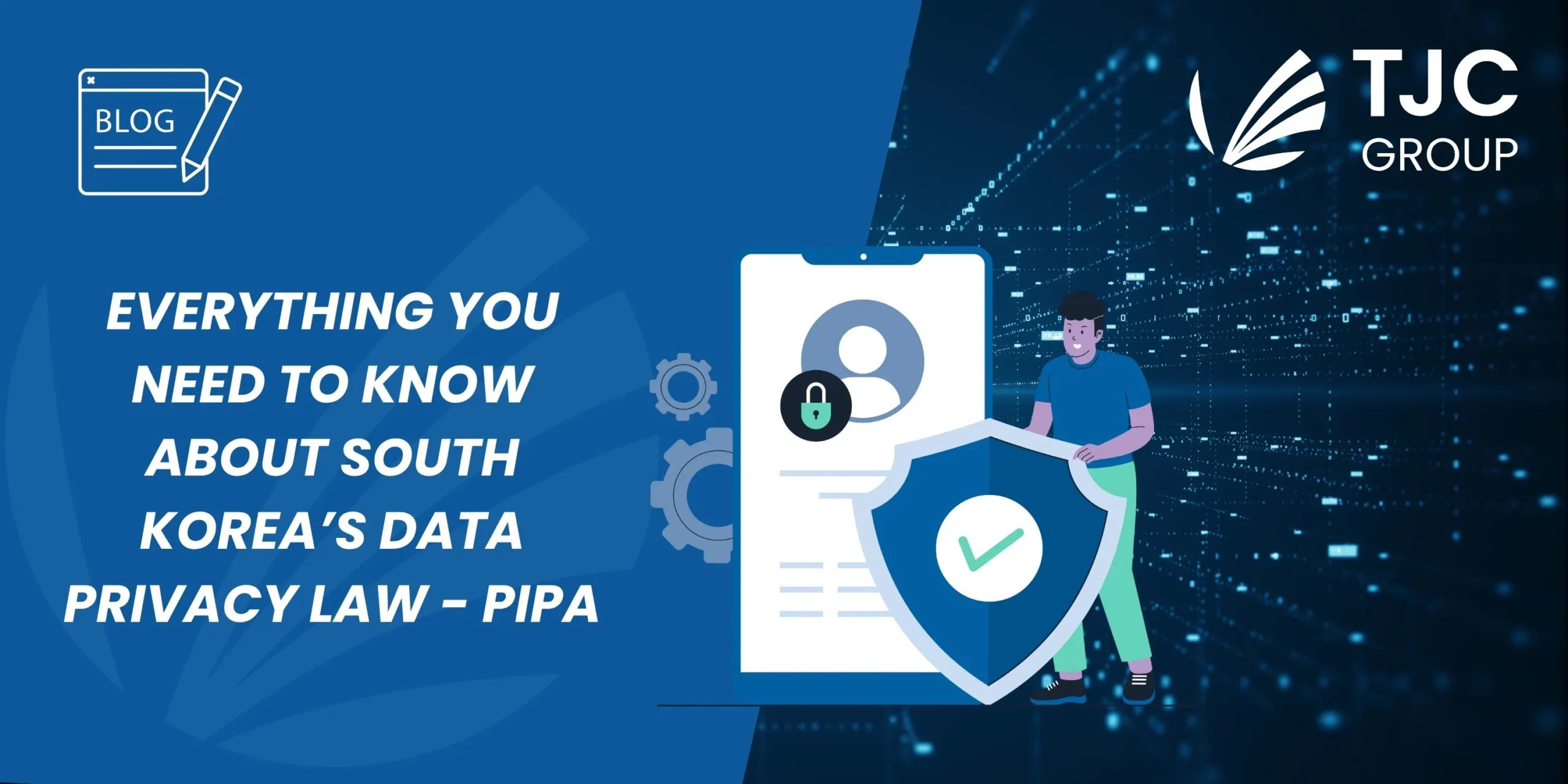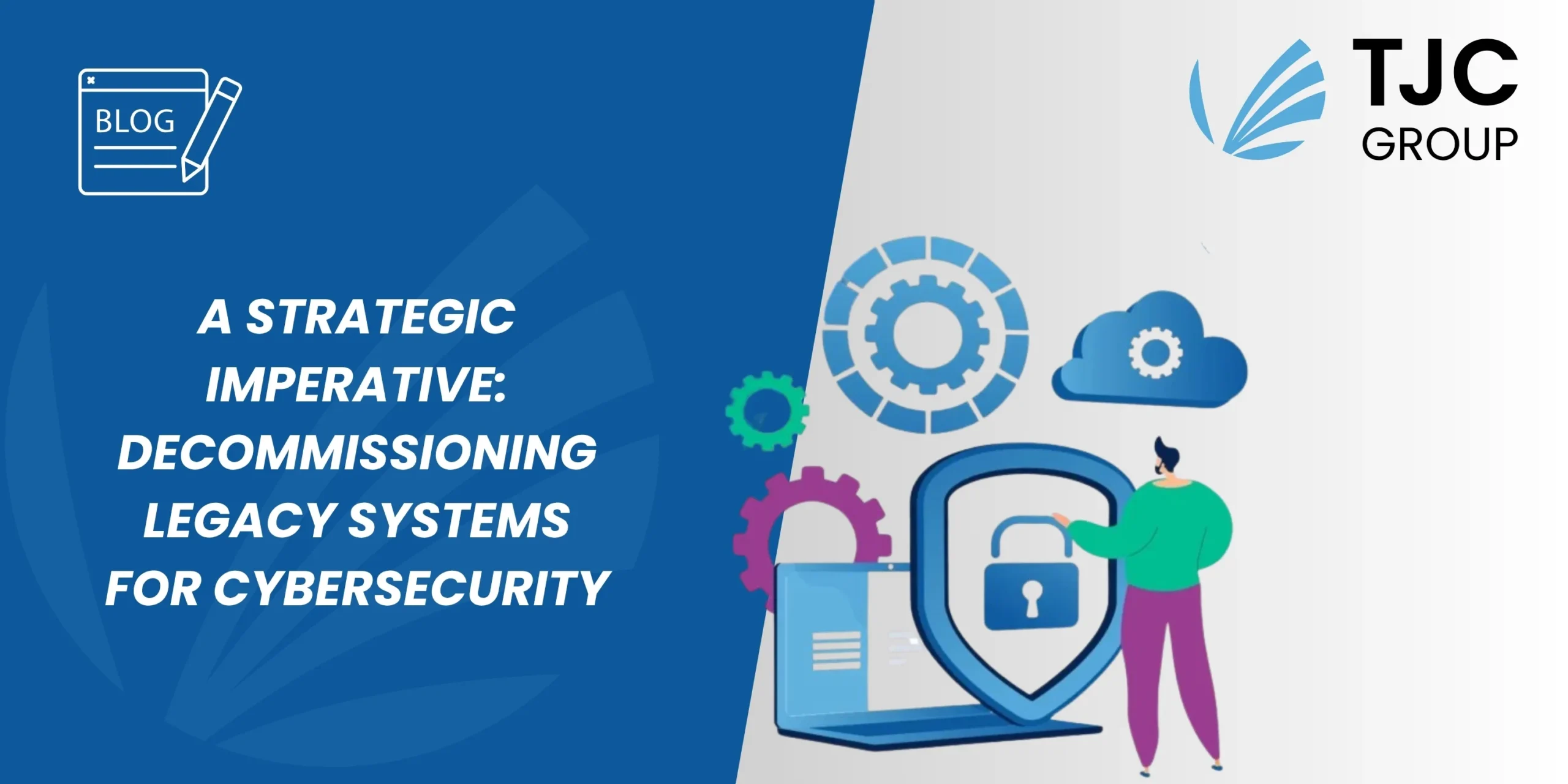Author: Priyasha Purkayastha, Global Content Manager, TJC Group | Co-author: Audren Butery, Project Manager & Digital Consultant, TJC Group
In today’s fast-paced, technologically advanced world, organisations often face the dilemma of deciding between maintaining their SAP legacy systems and retiring these obsolete systems to embrace modernised alternatives. However, SAP legacy system decommissioning is clearly the smartest choice, especially for those operating in industries with stringent regulations. Maintaining legacy systems can drain your resources, incur technical debts, and more. Read on to learn more!
Table of contents
- Introduction
- Understanding the hidden costs of non-decommissioned legacy systems
- SAP legacy system decommissioning: Technical debts of obsolete systems
- Explore: The volume of technical debts
- The cost of not decommissioning SAP legacy systems: The integration barrier
- Financial hurdle of legacy systems: How does it affect productivity?
- SAP legacy system decommissioning: How does the process help alleviate financial burdens?
- SAP legacy system decommissioning: Calculating the ROI, going beyond cost savings
- SAP legacy system decommissioning: Opting for ELSA by TJC Group
- Key takeaways
Introduction
The cost of maintaining legacy systems is high, and the scalability of such systems is limited. Rather than being a boon, these obsolete systems end up being a burden to the organisations. They drain out your resources (monetarily and workforce-wise), often leaving businesses to grapple with the old systems, leaving substantial long-term financial dents. Moreover, quantifying exactly how much is spent on the maintenance of legacy systems is quite complex.
As per several research reports, almost three-quarters, i.e., 74% of engineering and manufacturing organisations still rely heavily on obsolete systems and spreadsheets for carrying out their business operations – sadly, even in the aftermath of the COVID-19 pandemic. Because of this, organisations continue to spend major amounts of their budget on not just maintaining but also supporting and running outdated software on obsolete systems. As a matter of fact, it is said that insurance companies and banks allocate nearly 75% of their budgets to sustaining these obsolete systems. All coupled together clearly confirms the notion that SAP legacy system decommissioning is a preferred way forward.
Furthermore, the cost of maintaining legacy systems can rapidly escalate due to challenges that may arise in routine system management. Additionally, the need for partnering up with specialised technical expertise and buying licenses and licensing requirements also adds to the reasons that make the cost of not decommissioning SAP systems significantly high. These funds, in fact, can be more efficiently invested in modern technologies yielding better results and ROIs if legacy systems are retired.
Click the banner below to learn everything about SAP legacy system decommissioning:
Understanding the hidden costs of non-decommissioned legacy systems
What you and I see on the outside of maintaining legacy systems is just the tip of the iceberg. The reality is far different, because these obsolete systems have several hidden costs that add to the overall expenses. One of the biggest mistakes that organisations make is that they do not associate these hidden costs of running obsolete systems. To give you a gist of it, the ‘behind-the-scenes’ expenses of maintaining legacy systems are –
- The accumulation of technical debt
- Burdening IT teams with outdated software and technology
- Unwanted expenses of licensing redundant software and security
- Impact of running and powering old applications on the environment, disrupting sustainability targets.
In addition to these, another considerable cost of not decommissioning SAP legacy systems is the loss of business opportunities. As per the research highlighted by TCS, approximately 60% of organisations continue to use outdated systems for customer-facing applications; thereby leading to ‘below-the-belt’ customer experiences and quite a lot of missed business opportunities, hampering their overall organisational growth.
SAP legacy system decommissioning: Technical debts of obsolete systems
More often than not, organisations hang onto the obsolete systems, thinking decommissioning costs more than maintaining them. But you want to know the catch? The expense of SAP legacy system decommissioning is a one-time thing, while incurring expenses on maintaining outdated systems is a regular one. Moreover, organisations do not realise the technical debt that comes with legacy systems due to code dependency. Often, decision-makers are under the impression that if the legacy code is getting the work done, then why go for a change? However, the total cost of legacy system maintenance coupled with technical debts can burn a hole in your budget. As per a survey conducted amongst 500 businesses across finance, healthcare, and other sectors, approximately 80% respondents reported that the heavy technical debts have led to cancellations of business-critical projects, disruption in innovation, and hindrance in organisational operations. Additionally, around 93% of the surveyed people responded that organisations with technical debts have often struggled with serious consequences.
Explore: The volume of technical debts
To understand the impact of technical debts, it is important to address the question: How much technical debt is your organisation carrying? According to the Wall Street Journal, organisations across the world are burdened by approximately 1.52 trillion USD in technical debt. Moreover, further study concluded that around 337 million USD annually is required to operate and maintain legacy systems. So, all in all, it can be deduced that the cost of not decommissioning SAP or non-SAP obsolete systems is exponential.
Understand that wherever there is legacy system maintenance, technical debts pertaining to the implementation of stop-gap solutions will follow. Furthermore, as organisations continue to pile code onto an outdated system, the bugs, glitches, code reviews, and so on will only continue to multiply with time. As it is a hidden cost, organisations don’t consider technical debts as obvious financial debts. However, given the size of the problem that it brings along, you cannot turn a blind eye.
You’d be surprised when we say that as per an analysis of technical debt conducted at 100+ organisations –an average application of around 300,000 lines of code ended up with 1,083,00 USD of technical debts – i.e., 3.61 USD per line of code! Astonishing, ain’t it? That’s the sheer price an organisation must pay – or you can just say a hefty cost of not decommissioning SAP legacy systems. What’s even more concerning is that tackling the size of this debt is nearly impossible without entirely halting your projects.
The cost of not decommissioning SAP legacy systems: The integration barrier
In today’s day and age, where everything is digitalised, interconnected, and automated, it becomes quintessential for organisations to ensure seamless and streamlined integration between systems. However, that’s a big challenge with legacy systems; they lack compatibility with newer and modern technologies, which creates major challenges in business operations. But how does this lead to financial burdens or losses for organisations? Well, if you face integration barriers, you won’t be able to customise or comply with customer requirements, leading to losing out on potential clients and projects. That’s why non-SAP or SAP legacy system decommissioning is the best option that organisations must adopt to avoid such integration hurdles. Additionally, not investing in modern technologies impacts your organisation’s growth in the long run, which again, adds up to the financial burdens of maintaining legacy systems.
Financial hurdle of legacy systems: How does it affect productivity?
Innovating any modern solutions or software with incompatible tools in outdated systems is a serious challenge that organisations have to deal with. Adding to this, inefficient systems often frustrate the workforce, leading to lower productivity and morale. As per research conducted by Groove Networks, it is astonishing that the workforce spends an average of almost 3 hours per week dealing with IT issues of their obsolete systems. If converted annually, this means that 150 hours per employee are lost on tackling the challenges of legacy systems. But how does this become a hidden cost? Well, the time spent on rectifying the issues of these outdated tools could have been utilised for more strategic and revenue-generating activities. This may barely sound like a financial burden of keeping legacy systems; however, in the long run, the impact can be seen.
SAP legacy system decommissioning: How does the process help alleviate financial burdens?
Quite an interesting thing – even after the plethora of financial burdens with maintaining obsolete systems, organisations prefer keeping them. Wondering why? The answer is simple – the cost of SAP decommissioning, which can be a little expensive. However, as mentioned before, this cost is a one-time expense, in contrast to the continuous expense that you will face when maintaining obsolete systems. Having said that, there are several ways in which organisations can have a lower cost of decommissioning old systems.
Decommissioning as a part of your overall strategy
One of the most important things that you must do is recognise the upfront expenses that come with system decommissioning. This helps establish decommissioning as a strategic investment rather than a simple expenditure; furthermore, it allows organisations to lay the groundwork for long-term gains by making decommissioning a part of their overall business strategy.
Ensure the right balance for streamlined transitions
Organisations must analyse the economic factors that are a part of data migration when doing SAP legacy system decommissioning; however, this must be done with an emphasis on attaining the right balance between accuracy and efficiency to help ensure a smooth and streamlined transition. As a matter of fact, if you consider decommissioning in parallel with migration instead of a separate one, it helps reduce the workload while making both processes smoother.
Meticulous planning and investments post-decommissioning
Once you are done with the decommissioning of your legacy systems, it is imperative to strategically redistribute and reallocate the budget. In fact, this presents organisations with a unique opportunity to allocate resources into high-impact initiatives, thereby fuelling innovation, accelerating digital transformation, and unlocking ways to ensure sustainable strategic growth.
Capitalise the post-decommissioning surplus
Sounds too complex? Well, this simply means that organisations must invest in future-ready technologies, backed by automation, AI, machine learning, etc. Post the decommissioning of your legacy systems, evaluate and analyse how the financial dividends can be leveraged to the organisation’s advantage. Strategically reinvesting in cutting-edge, state-of-the-art, and future-oriented technologies allows organisations to align with the upcoming industry trends while making their solutions and operations future-proof in today’s increasingly digitalised and AI-oriented landscape.
SAP legacy system decommissioning: Calculating the ROI, going beyond cost savings
While the initial SAP legacy decommissioning cost is high, the ROI it generates goes beyond the immediate cost savings. In fact, there are several financial benefits to it, mainly consisting of the following –
Tangible operational gains
By decommissioning your obsolete systems, one of the significant benefits that you can leverage is quantifying the operational effectiveness of your organisation. From reduction in maintenance overheads to enjoying streamlined workflows, these enhancements in your operations help gain measurable returns, thereby signifying a clear link between system decommissioning and improved performance.
Opportunities for strategic alliances
Successfully executing decommissioning projects can help bring substantial opportunities for strategic business alliances. As a matter of fact, such collaborations foster innovation, drive co-created ventures, and lay the foundation for partnerships within and beyond the industry, thereby creating a pathway for financial and business gains.
SAP legacy system decommissioning: Opting for ELSA by TJC Group
The importance of having seamless and efficient solutions cannot be stressed enough. Organisations across the world generate humungous amounts of data on an hourly basis and extracting this data when decommissioning an obsolete system is not an easy task. It is time-consuming, and any complexity can disrupt the process and your operations. Therefore, TJC Group has developed a solution that can help tackle any challenges and ensure a smooth decommissioning process.
Built and certified with SAP Business Technology Platform or SAP BTP, the Enterprise Legacy System Application (ELSA) is a cloud-based application that helps you decommission legacy systems. In fact, ELSA not only supports SAP legacy system decommissioning but also allows non-SAP customers to benefit from the SAP open technology, i.e., SAP BTP running on open-source, cloud foundry architecture. Although ELSA works with major hyperscaler, it can be adapted to work with OVHCloud and other smaller actors. Additionally, the Enterprise Legacy System Application (ELSA) solution also runs with on-premises storage, ensuring the secure storage of extracted legacy data. Out of the many unique features of ELSA, the one that stands out the most is that extracted data can be re-accessed easily, both before and after migrating to S/4HANA or any new ERP system. Overall, the expense of retaining legacy systems can be eliminated, thereby making the cost of SAP decommissioning a smart investment.
Key takeaways
- While you may have to invest a tad bit more initially for system decommissioning, the future will bring you significant ROIs.
- Keeping legacy systems not just burdens you financially, but also puts an overload on the system, thereby impacting its performance.
- Moreover, there are far-reaching concerns about keeping obsolete systems like data privacy and data security. Additionally, complying with the ever-changing global regulations becomes a challenge.
- Maintaining legacy systems can become a cumbersome task for your IT and other resources as well. Add technical debts and hidden costs to the list – it becomes more of a burden and not a boon.
- All in all, non-SAP or SAP legacy system decommissioning is a strategic move forward to not just ensure financial benefits but also enjoy enhanced system performance, better use of resources, and much more.
Join hands with TJC Group to maximise your gains and decommission legacy systems with ELSA. In fact, when retiring your obsolete systems with ELSA, you can connect it with your analytical data pipeline or future AI solutions, therefore enabling easy access to high-quality historical data in just a few clicks.
Contact us today for more information!


